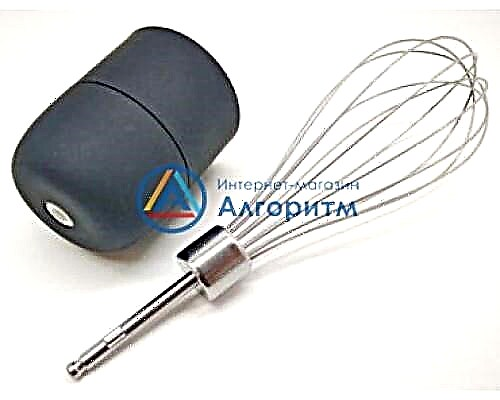Carpets are floor coverings in which textile materials serve as the front surface of the product during its operation.
The carpet creates an image of homeliness, warmth and comfort. With it, you can get the original interior design, as well as the right one, it will emphasize the individuality of your home.
A carpet is a necessary element of a modern interior that connects all the details into a single composition. At the same time, it doesn’t matter what style the room is designed in: it can gravitate towards oriental splendor or be prone to minimalism, anyway there is a place for a good quality carpet in it.

Carpet Features
Modern flooring performs the following functions: aesthetics and fashion, warmth and comfort, ecology and health, sound insulation, safety, durability, ease of care. Today, carpets are no longer an urgent need, but due to their high strength and durability, a variety of colors (patterns, patterns), the presence of almost any size, as well as different pile heights and fiber densities, they can do this very well.
Carpet application
There are wall and floor carpets. They are almost identical - they are made from the same materials, using the same technology.
The carpet on the wall today does not serve to preserve heat, and not to hide wall defects (although this can also be attributed to the pluses). Rather, it is an unusual and stylish design element, a kind of "highlight", emphasizing the good taste of the owner.
It is not customary to hang carpets with a long pile, too voluminous and fluffy. And on the floor not so often you can see thin fabric tapestries. In addition, high demands are made on different types of carpets for strength and wear-resistant characteristics. While the canvas on the wall may not have these qualities.

TYPES OF CARPETS
Currently, there are three types of carpets: woven, wicker and felted.
Woven carpets, usually without pile, are made by weaving weft and longitudinal threads. Drawing on them is applied using a weft thread. Due to the low level of productivity, created manually or on a special machine, woven carpets are expensive. Their significant advantage is that they can be created with a wide variety of patterns and in different colors.
A carpet is considered to be woven if the yarn is embedded in its fabric base by weaving knots, while the carpet has a pile. This kind of woven knot should completely bend around at least one warp thread.
Silk threads are woven into the pattern of the most expensive and luxurious carpets, which give the carpet a beautiful gloss. There are also handmade silk carpets.
Every 7-10 centimeters woven, the carpet is carefully trimmed, leaving a pile of 2 - 2.5 centimeters long. Only then does a pattern emerge from the random interweaving of colored threads.
Handmade carpets often also include felt carpets made of felting made of sheep wool. However, there are no warp threads or weft threads in them, so they are considered less practical, and in general are not carpets as such.

Classification of carpets by production method
All types of carpets are made in two ways: manually and using automated machines.
Manual is the most valuable and costly way to make luxury carpet models. Such carpets are woven only from natural materials, as cheap synthetics depreciate all the work. Each knot on the base is tied manually, after the pile is trimmed to the desired length.Interestingly, over time, the nodules only tighten more, and the product becomes more durable. That is why the service life of such a canvas can reach 200 - 300 years.
Modern handmade carpets are made according to old technology, so that all products are exclusive, even if made according to one pattern.
Carpets are made by machine using both natural materials and synthetic fibers. This is the most common way to make carpets. Modern technology and engineering solutions can reduce production time and money to a minimum.
The intermediate position between machine and handmade carpets is occupied by the so-called tufted carpets. The thread fixed in a special apparatus with a needle pierces the dense latex base of the carpet and is fixed with glue. The back side is then covered with a backing to protect the floor from scratches. The resulting outer loops are cut to the height of the pile. Carpets with a high (4-7 cm) pile are most often created using tufting technology.

Pile and lint-free
Pile and lint-free types of carpets are made both manually and by machine, from natural and synthetic materials, respectively.
Lint-free carpets are easier to manufacture, because, as a rule, only two threads are involved (longitudinal and transverse). They are used both for decorating walls and as flooring. There are several varieties of lint-free carpets:
- Mats - woven rugs made of natural plant fiber, or synthetics that mimic natural material.
- The Palace. They use one transverse thread and one warp thread, due to which the fabric turns out plain or striped.
- Kilim. It is woven according to the same pattern as the palace, but with multi-colored threads, due to which a pattern appears on the material. Kilim is a two-sided carpet, its front and wrong side practically do not differ.
- Sumakha. This type of carpet is characterized by the fact that uncut threads are left on the wrong side, which serve as a warm substrate, and on the front side there is a smooth fabric with a pattern.
Pile carpets are more difficult to manufacture, since three threads are involved (the main, forming a knot, a fixing knot). The ornament is formed from knots fixed on the warp threads according to the drawing. The height of the pile is distinguished:
- Short hair. Pile length up to 5 mm. This is usually carpet.
- Medium pile. The pile length is from 6 to 15 mm. Suitable for kids room, living room.
- High pile. Pile length 16 mm or more (up to 100 mm). Very soft and warm carpets. Such products usually lay in the bedroom.

Classification of carpets by material composition
In the manufacture of carpets, the following materials are used: wool, cotton, silk, linen, acrylic, rayon, nylon, polyester, polyamide, polypropylene, paper and others.
Each material, both natural and synthetic, will have its own advantages and features. All of them differ in price, wear resistance, features of care. Very often manufacturers combine different materials.
- Natural - the most expensive and luxurious carpets, usually handmade.
- Partially synthetic (± 20-30% synthetics) are the most common due to their wear resistance, characteristics and affordability.
- Fully synthetic carpets - the cheapest and most durable, are perfect for frequent visits (such as the entrance hall and living room).
Woolen carpet is an expensive, refined, status item. The raw material for production is most often sheep wool. Goat or camel products are rarely found.
Good texture, elasticity of the pile, rich color. The carpet will not lose its appearance even after 10 years of operation, and the service life of such a product is estimated for decades.
The material absorbs all odors and impurities. Moth or fungal mold can eat it.Products do not differ in bright colors and rich colors, since wool is harder to dye than synthetic threads. High price.

Cotton carpet is inferior in resistance to many materials, and in the presence of moisture it wears out quickly. According to the tactile sensations, it is softer than wool, it is easier to clean it. It is very difficult to find a carpet made of pure cotton, as a rule, wool will be mixed there, which will only improve all its characteristics.
Silk carpet is a luxury item. It is characterized by softness, delicate natural shine, a wide variety of patterns and colors. Such a product serves several generations, 200-300 years old. This is a very expensive and often exclusive thing, since most of these products are made by hand, according to old technology.

Acrylic carpets look and feel strongly reminiscent of woolen carpets, and their main advantage is that they do not cause allergies and hardly accumulate static electricity, unlike other synthetics. They repel moisture and mold well, such a carpet can be laid in the bathroom.
The nylon carpet is unpretentious in cleaning, resistant to dirt and durable. It is perfect for places with heavy traffic.
Polypropylene carpets are similar to wool, and no less popular. The reason for this is: a wide range, really low cost, ease of maintenance and unpretentiousness, low weight, color saturation with resistance to cleaning.

In shape
- The circle is an interesting option, suitable for many places in the house. It looks spectacular in the hallway, nursery, under the coffee table of the living room.
- The octagon is suitable for any room where it lies freely.
- Oval is used in the kitchen.
- The square fits the rooms of the correct geometric shape.
Leave free space around the edges. The greater the gap between the furniture and the carpet, the more spacious the room looks. It is undesirable to put furniture on the carpet, this will create inconvenience when cleaning, the pile will be remembered.
CARPET SELECTION
Any kind of carpet should not smell anything. Natural should not exude the aroma of wool - this indicates a low quality product, and synthetic - should not have a sharp "chemical" smell. If the canvas has a musty or moldy odor, then this may indicate the presence of mold. The quality of the product can be judged by its density. When bending from the front, the fabric base should not be visible. On the inside, you can see the density of the knots - the more there are, the stronger the carpet.
For the hallway, it is better to give preference to artificial materials with a rubber base. A waterproof substrate will provide a long service life, and a small pattern will help to hide the inevitable spots.
For the bathroom, special mats are used - cotton or synthetic with foam rubber. There are also special anti-slip coatings for showers and bathtubs.
For a children's room, carpets with medium and long nap are recommended. The colors are bright and colorful.
The bedroom will make a comfortable and quiet canvas with a long pile. You can also put small soft rugs directly near the beds - so they will not leave fingerprints from the bed. It is recommended to use products in pastel colors, pick up rugs and bedspreads in color.
For the living room, a carpet with a small or medium pile length is suitable - it does not leave prints from furniture.
If the room is bright, it is better to give preference to cold colors. The dark room will be refreshed with warm colors.
To emphasize the beauty of furniture, choose a plain product. Carpet with a pattern attracts attention, distracts from the interior.

- After buying a new carpet, you need to vacuum it to remove the rest of the pile, and ventilate well. Pieces of pile can fall out for another 2 - 3 months - this is the norm for woolen and synthetic products.
- The carpet needs constant cleaning. Vacuum the surface before cleaning.Using a detergent, first check on a separate line to see if it affects the color.
- Do not wet the base of the carpet, otherwise it will deteriorate. Cotton and jute coatings cannot be cleaned with a vacuum cleaner.
- In winter, you can clean using dry snow: spread the carpet in the snow pile down and knock out the dust with special flexible knockouts.
Each carpet has its own cleaning features. Carefully read the instructions for the specific product.
Types and features of carpets in the interior

To achieve a cozy atmosphere in the house, you need to take into account every little thing, and the flooring plays in this matter certainly not the last role. A correctly selected carpet can not only instantly change the appearance of the room and add sophistication, but also importantly, protect the person’s legs from the cold.
Features
The carpet is a subject of a decor of the room. He is able to instantly add coziness and special atmosphere to a room of any purpose. It is pleasant to walk barefoot on a soft carpet, the pile gives a comfortable sensation and protects bare feet from unpleasant sensations when touching a cold floor.
In addition, these floor coverings have another important function - sound insulation. A particularly interwoven pile of the coating has the ability to dampen the sound coming from the neighbors below.
You can also insulate yourself from your neighbors on the side by simply placing a decorative carpet on the wall.
Another feature of this type of floor covering is that, with the help of various stylistic solutions for the appearance of the carpet, you can change the concept of the overall design of the room. The carpet can successfully zoning the space or highlight the necessary area, to emphasize. In addition, the choice of a certain color and texture will help to adhere to a certain style of room design.
Like any other interior element, carpets have their pros and cons.


So, the following factors can be attributed to the advantages of the carpet:
- If you put a suitable carpet in the room, it will become much more comfortable.
- By using different models, different colors and designs, you can achieve a radical change in the interior of the room.
- A correctly selected carpet is easy to clean from dust, especially since it helps to hide its traces, unlike a dark laminate, on which dust becomes noticeable within an hour after cleaning.


- Another advantage is noise reduction.
- The presence of a carpet in the room will not only provide a warmer floor in the cold season, but will also normalize the humidity in the room.
In addition, models made from certain materials also have certain advantages. So, for example, if you lay a woolen version in a room, it will help to improve the blood circulation of those walking on it, since the wool fibers will provide foot massage. But the carpet with short artificial pile is most convenient for cleaning.

Among the disadvantages of carpeting are the following:
- Static voltage. Many models made of natural materials and consisting of 100% synthetic materials are subject to the accumulation of static electricity, which adversely affects the usability of the models.
- Slip. Quite often, small or excessively light carpets made of synthetic materials move along the slippery surface of the main floor covering, which causes inconvenience for consumers. However, this disadvantage can be easily eliminated. To do this, you need a special rubberized substrate, which is laid directly under the carpet and eliminates its slipping.


- Cost. High-quality models have a fairly high cost, which can also be a minus for some users.
- Care. The larger the size of the coating and the longer the pile, the more difficulties appear during the care process, especially since any carpet has the ability to absorb liquids and dust.

All classic carpet models can be divided into types according to several main features.
Synthetics is the cheapest and most affordable option, it has many colors and textures. It can be long and short-haired and have many options. Synthetic models are one of the most durable and perfect for rooms with high traffic. Such options are light in weight, which can be either a tangible plus when moving the carpet, or a minus when it moves on the floor. Avoid this anti-slip litter.
All-natural carpets are notable for their high cost, quality and weight. They do not need an anti-slip substrate, however, they cause difficulties in maintenance, have a rather limited assortment both in color scheme and in terms of texture. In addition, “shaggy” woolen carpets are contraindicated for allergy sufferers. The mixed type is the most common option. It has high wear resistance and durability. In addition, having a high percentage of natural fibers (about 70-80%), such carpets have an acceptable cost.

And if high-quality synthetics were used in the production, then the finished version will not be inferior to natural analogues. In this case, the hypoallergenic index will be significantly higher.
All carpets can also be divided according to the manufacturing method into:
- Handmade Carpets,
- Machine made.
Manual labor is the most expensive and longest process for making carpet. Most often, natural materials are used for this production, and the result is expensive elite carpets. Often such models are double-sided due to the fact that accurate manual work from high-quality material allows you to get the identical reverse side of the finished product. A popular option that fits into the home interior is a smooth woven double-sided handmade carpet - kilim. Most often, this type has an ethnic color. However, it is worth mentioning that kilims are also often the basis for a handmade carpet.
Machine-made carpets are much cheaper, since mechanization has reduced the time and money spent on creating carpets to a minimum. The use of synthetic materials allowed to increase the service life of such carpets and make them more durable.


Another sign by which carpets can be divided is their pile, stand out:
Both options can be performed either manually or using special machines, contain natural and synthetic materials in various proportions.
Lint-free carpets are easier to manufacture, they are produced using only two threads - longitudinal and transverse. Extra threads are needed only when an embroidered version is required. When the model does not have a long pile, it is easier to clean, it does not collect dust, which means that the service life of such a coating is longer.
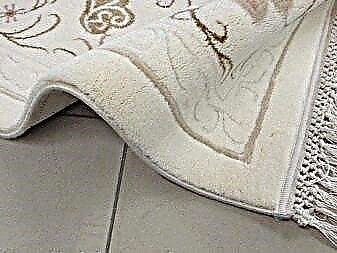

For the production of pile models, nodular methods are used. In this case, not 2, but 3 warp threads are used; from the third, nodules are formed that form a pile.
But the pile models, in turn, are divided into groups depending on the length of the pile. This is a graduation for medium, long and short pile. Short is most convenient for use, therefore it is often used in places with greater passability and where it is more affected. So, for example, for stairs or as a mini-carpet under the chair on which they will often sit, it is best to use this option.
Short pile models are made using needle-punched or tufted methods. Accordingly, the tufted version implies the stitching of a woven or non-woven base, but the needle-punched method implies, as it were, driving a pile into the base, and after fixing it.
Carpets with a long and medium pile are most often used in bedrooms, where it is necessary to achieve maximum comfort and where it will be most important to feel a soft and warm coating under your feet.
How to choose?
In order to choose a carpet that will appeal to all households, you need to pay attention to several factors.
First of all, you need to pay attention to the ratio of materials in the composition. Woolen carpets have a high level of noise and heat insulation, are durable and elastic. Elite models of carpets are, as a rule, handmade woolen products.

The viscose carpet is not inferior in quality to wool. It is reliable, warm and soft. Such a carpet should be selected for a children's room, since this material does not cause allergies. Such carpets have the best reviews, and it is this type that is most often used at home and for constant use. Such a carpet is easy to clean and move, and its appearance and pleasant tactile sensations are a separate advantage of this type of coating.
Synthetic coatings have the lowest cost, have a huge range of colors and textures, so these options can be found for almost any interior. So, for example, to brown wallpaper of a classic-style bedroom, you can choose a beige, pink or turquoise carpet, and choose a synthetic carpet of a similar color under the turquoise curtains.
Depending on the purpose of the room in which the carpet will be located, it is worth choosing the appropriate options.
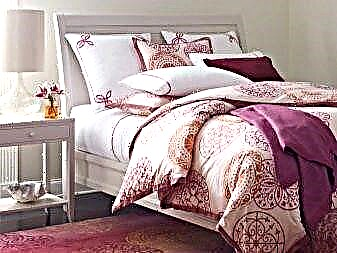

For the bedroom, the best models are, of course, carpets with a long soft pile, but for the living room it is better to choose models with a shorter pile, which will be easier to clean from dirt.
In the choice, you can also navigate by color. For example, it is better to use a multi-color bright carpet in monophonic rooms, but in a bright, colorful interior it is better to lay soft products, the monochromatic coloring of which is suitable for furniture.
The size and shape of the carpet will also depend on the size and decor of the room. In crowded rooms, do not use carpets of non-standard shapes, this will cause an overload of details, but if the room has a minimum of decor, then curly models are what you need. So the size must be chosen in accordance with the dimensions of the room.

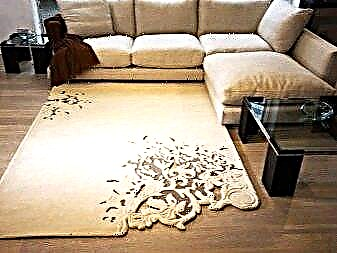
How is it different from a palace?
Many people are convinced that carpet and rug are the same type of flooring. And they really have a lot in common, but if you delve into the characteristics of a particular option, you can highlight significant differences.
Palace is originally a lint-free coating option, and the carpet, in turn, is most often equipped with a rich thick pile of various lengths.
In connection with this feature, the carpet has a large weight, which makes it possible not to use the anti-slip backing, which is mandatory for the palace. In addition, the pile gives the carpet difficulties in terms of care.


Another significant difference is the form. So, if the palace can be made only in the form of a rectangle, whose length exceeds the width, then the carpet can not only have completely different sizes, but also be the most unusual shapes.
The carpet can be placed as a decorative element not only on the floor, but also on the wall. Such a decision can perfectly emphasize the interior, made in ethnic or oriental style. But the palace should be placed strictly on the floor.
The colors of the carpets are usually more diverse and vibrant, but the rugs have more blurry and pale colors. If the floor on which the coating will be laid is not perfectly smooth, then the palace is not suitable for such a room, but its brother, on the contrary, is able to successfully hide all the unevenness of the floor.
Materials
As mentioned earlier, all materials used for the manufacture of flooring can be divided into natural and artificial.The most popular are the following types:
- Wool. This is the highest quality natural material. It has a maximum degree of thermal insulation, therefore it provides floor heat in the room. Models made of wool are resistant to dirt and quite durable. Quality woolen patterns can last up to 50 years. Wool carpets include models made on the basis of felt. Felt version is most often a handmade canvas, which is made to decorate rooms of a certain style.
- Acrylic. This is an artificial analogue of wool. Such carpets have all the advantages of woolen options, but they do not cause allergic reactions, which is an indisputable advantage of this material. Everything else, acrylic mats are moisture absorbing, so they can be used in the bathroom. Acrylic opens up a lot of opportunities for the production of unusual models, for example, relief carpets, widely distributed today, most often have this material in their composition.
- Cotton. One of the most moisture resistant materials, but at the same time the most fragile. It is quickly worn away and must be replaced. If textile options with high moisture absorption are necessary, it is better to pay attention to a terry option or a microfiber rug. They are more wear-resistant, not inferior in quality.
- Polyester. This material looks spectacular on long-pile carpets. They are very similar to wool, but they are much easier to clean. Since polyester is a fairly lightweight material, a special mesh is at the base of carpets made of this material, which prevents slipping.
- Leather. Such options are not so common, but they can successfully fit into the style of loft, minimalism or modern. Such carpets are made by combining pieces of leather of various shapes.
- Polyamide. One of the most common man-made materials. At the same time, this type of synthetic material is the most durable, so it can be used in rooms of any purpose. Polyamide carpets have a wide range of colors, as well as various pile lengths. So, for example, a long pile can imitate today's grass carpet in the interior of any room.
- Velours. Natural material, resistant to damage, as soft and pleasant to the touch as possible, warm and durable. A popular version of bath rugs is plush, it is made using this material.


In addition, there are unusual coatings that carry a more decorative function than functional. These include mats made by weaving scraps of fabric, or, for example, cork carpet.
Dimensions and shape
The stylistic decision of the interior and the size of the room will affect the choice of a certain shape and size of the carpet.
The shape of the carpet can be:
- Square,
- Round,
- Rectangular,
- Oval,
- Irregular shape.


Oval and rectangular models are most often used in the classic interior of a room, but modern design styles are loyal to non-standard shape models. In addition, unusual shapes, such as a butterfly or a cloud, fit perfectly into children's rooms.
Choosing a suitable carpet size that is commensurate with the room is also a very important task. Heavy furniture cannot be placed on a thick carpet with fluffy pile, therefore smaller dimensions are needed here to avoid dents on the floor. Halls and bending of carpets of too large sizes are also unacceptable, the distance from the edge of the product to the baseboard must be at least 10 centimeters.
As for standard dimensional rulers, manufacturers define the following options:
- The smallest rugs, which are usually used as bedsides or models to create an accent, have a width of 50 centimeters to meters, while their length is from 80 to 140 centimeters.
- Options with a width of 100 to 200 and a length of 100 to 480 cm are average, a thin carpet of this size is indispensable in the kitchen or in the hallway.

- The sizes of carpets that are commonly used in living rooms and bedrooms have widths of up to three meters and lengths of up to 6 meters. The most common with this size is 2 by 3 meters.
- In addition, there are really large carpets. The use of such models is appropriate in large rooms where full floor coverage is required. So, the longest carpet, which can be found in retail, reaches 11 meters, and the width of this model at the same time reaches 7 meters.
Appointment
A distinctive feature of modern carpets is functionality - an important factor in the interior. Based on the characteristics of the models, carpets are capable of the following:
- To provide sound insulation, saving the owners of the house from extraneous annoying noise,
- Protect the surface of the floor from abrasion and mechanical damage in areas of greatest traffic,
- Become a bright spot in the interior composition, indicating the particular taste of the homeowners,
- Hide minor damage to the old flooring (scratches, cracks, holes),
- Become a temporary mat for yoga, meditation or exercise, replacing the topper (thin mattress).
Benefits
Carpets have many advantages:
- They are made in various ways (using high-tech equipment by machine, manually on a special weaving machine, hands using improvised materials),
- In the work on carpets, threads of natural, artificial and blended origin are used, different in texture, length and number of knots per square meter,
- Carpets can be a self-sufficient accent of an interior composition or a connecting component of furnishings different in texture and shade,
- The models are distinguished by a wide range of color palettes, opening up a lot of possibilities for a harmonious combination of the canvas with the color type of the existing design idea,
- The samples are distinguished by a variety of prints, through which you can beat the degree of illumination of a particular room, increasing its space (especially important for small rooms),




- Carpets have a diverse size range and shape, so you can completely cover the floor covering or accent certain areas by highlighting one of the areas (playing, sleeping, working),
- Coatings can be placed in almost any room of the home (living room, children's room, spacious loggia, study, home library, bathroom, corridor and kitchen),
- Rugs give the interior completeness and homeliness, making the atmosphere comfortable,
- Samples can be classic or thematic, which is expressed through a picture or texture,
- They are standard classic or of unusual appearance and composition, bearing purely decorative or strictly basic functions,
- The choice is not limited in style, and with a wise choice, it is possible to harmoniously fit the carpet in any direction of the style from classics to creative thoughts of our time,
- The models have different bases, thanks to which you can find especially strong and reliable canvases in the rulers for long-term and intensive use,
- Depending on the type of raw material, its quantity and the complexity of manufacturing the coatings, they differ in different costs, which allows them to be purchased for the floor or wall, taking into account taste preferences and the planned budget.
Minuses
Carpets are a classic design technique, but with a lot of advantages have disadvantages:
- Depending on the model, there are restrictions on the location,
- They do not always have antimicrobial and moisture-resistant impregnation, therefore, not all of them are resistant to the formation of the environment for the appearance of fungus and moths,
- Not always hypoallergenic, therefore they require a solid choice and are not suitable for allergy sufferers,
- Mostly all accumulate dust on the surface and down to the base, which leads to the appearance of dust mites,
- They absorb moisture in a humid environment, which can disrupt the coating structure and make it loose,


- Varieties with a pile are more difficult to maintain, do not always tolerate regular cleaning with a vacuum cleaner and knocking out,
- In most cases, they need a combination of fibers to achieve the highest possible practical and aesthetic characteristics,
- Large-size models for the entire area of the room are inconvenient in location, they need to completely free the room from furniture and furnishings,
- Budget options are characterized by a short service life, impractical and simplify the interior composition of their appearance.
- Terry models make it difficult to maintain: the loops that make up the texture of the panels prevent getting rid of dust and small impurities.
What is the difference between a carpet and a palace?
Today, the word “carpet” is used to call all types of carpet paintings, however, in reality, carpet and carpet are not the same thing. They are united by the fact that they are both carpeted. The difference lies in structure and form. It is these two factors that determine the appearance and quality characteristics of products.

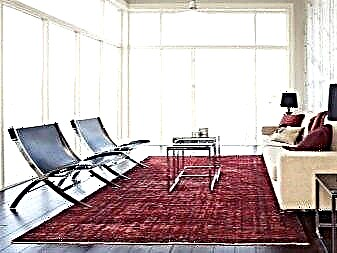
Carpet - a cloth, which is often presented in the form of a rectangle, square, circle or oval. It can be small, moderate in size or overall. Some forms are completely creative and have an edge in the form of festoons, semicircles, zigzags, waves. Sometimes carpets are made in the form of flowers or the silhouette of an animal's skin. They do not have an excessively elongated shape, they are almost always wide, differ in a rich selection of colorful colors with the addition of the original pattern, or do not have it at all.
Carpets are demanding in care, can decorate walls or floors, often hide small irregularities and do not move from the location, as they are very heavy. They are hard to fold.
The rugs are carpet paths that are designed exclusively for the floor, can be of great length and can be made using the technique of hand or machine weaving and do not have pile. Their shape is strictly rectangular, the pattern is concise and not always bright. Broads are practical products, they are easy to care for, they are laid solely on an even floor covering, although during operation they can move from one place, since they are lighter than carpets.
If desired, and depending on the size, these canvases can be folded. The structure of the texture is a loop, while the carpets - pile.


Existing varieties of carpets are classified according to several criteria. By type of use, they are wall and floor.


Categories may include carpet of various types: pile and lint-free. Two categories differ in the number of threads involved in the work. In the process of creating a cloth for lint-free models, two threads are used (lobar and transverse), while in the manufacture of pile products there are three of them: the main one, which bends around the pile threads, pile, of which fragments consists of a pile and fixing, which reliably connects the villi at the base .


According to the manufacturing method, carpets are divided into the following:
- Weaving - products created by the method of crossing the warp and weft threads on a weaving machine,
- Woven, created by weaving threads into the warp,
- Knitted - varieties that are performed by knitting loops or stitching them with needles,
- Needle punched, made by mechanical fastening by means of needles,
- Taifing - an analogue of needle-punched products with a small difference: in these products there is no binder impregnation,
- Flocked - canvases formed by gluing a pile onto an adhesive base,
- Tufted - varieties that use a special gun.


Each variety has its own characteristics and advantages. If you choose a quality model that should be durable and reliable, it is worth taking a closer look at the options with a strong woven, woven and knitted base.
Moreover, it is important that it be tight and of high quality: this is the main factor in the durability of the product, regardless of the level of patency of the zone.
Felt-based floor-mounted counterparts are excellent sound insulators and save the floor from cold. Thin fabric patterns are good for walls.
Texture
The surface of carpets is one of the key factors of choice. It is important that the product is practical and comfortable, therefore, it is necessary to know the features of their structure. In lint-free varieties, the surface is predominantly smooth and simple. Such carpets do not have high sound insulation and do not provide heat to the legs. Products with a pile are good in that in most cases they can sit on the floor reading books, watching TV, working on a computer, playing with children.


The comfort of the surface of the pile products is determined by the length of the pile. In short-hair versions, it reaches 1-2 cm, in the line of long-hair varieties, the pile height, depending on the structure, can be from 2.5 to 10 cm. The length of the pile is one of the factors determining the cost of carpet. The larger it is, the more expensive the product. However, not everything is so simple: elasticity indicators, fiber composition, resistance to weight loads (deflection), ease of care are important.
Not all models with a long pile are appropriate in the kitchen, hallway and corridor, since they do not provide for daily cleaning and suffer from each cleaning, which affects the softness and beauty of the pile.


The most interesting textured solutions to the surface of the paintings are the following pile structures:
- Velor - plush villi of the cut type of the same length,
- Frize - "curly" yarn with heat treatment of fibers and a pile length of up to 5 cm, resistant to crushing,
- Saxony - thermofixed fibers of the same length, resembling a frieze, having a length of up to 4 cm,
- Shaggy - shaggy villi from 3 to 7 cm long, resembling Saxon, but in contrast, consisting of pile of different thicknesses,




- “Cut-loop” - a combined pile of cut and uncut loops from 4 to 8 cm in length,
- Bukle - pile loops, one of the varieties of short-hair models,
- Berber - pile chaos, which is a tightly twisted thread with an uneven structure,
- Skrol - pile in the form of loops with cut tops.
The different structure of the pile determines the degree of filling of the canvas: in some cases it is quite dense, so the villi are directed strictly upwards and do not fall on their sides. In other cases, the base is friable, therefore, with a detailed examination of the carpet, you can notice the base.
The larger the number of knots in the fabric and the longer the pile, the harder the carpet and its weight.


Decor and arrangement
Decorative function is one of the important qualities of carpets. The degree of relevance in a given interior style depends on it. In addition to the picture, the products can be decorated with fringe, braid, cord, textured pom-poms and other decor.


Models for children are often informative: made in the form of developing rugs, they can have more creative decor methods: small soft toys, rustling materials, packed in fabric covers and others.
A distinctive feature of such products is the use of a mat on top of the main one. It is placed on a classic rug to prevent material from slipping. Such products help babies develop fine motor skills in their hands.

By decorative techniques, products are made in different ways:
- With a nap ornament
- With embroidery on top of the woven base,
- With trim on the edge, increasing the area of the product.
By the type of drawing, the models can be the following one-sided or two-sided. According to the image, the carpets have the following modifications:
- In the form of a monophonic spot,
- Like a realistic drawing,
- Stylized
- With ornament
- Abstract.
Each technique depends on the method of manufacturing a particular canvas, its purpose and scope. Shorthair cloths are more expressive of lines, so they are often decorated with small details of the pattern. They are good in the interior of the kitchen, living room and hallways. Relief long-piled counterparts cannot have clear lines, so the pattern on their surface is less expressive.


Lint-free items are appropriate in the kitchen, wall. Palace with a simple pattern without the wrong side are suitable for the corridor and small narrow rooms. Classic slim mats are an excellent decoration for the hallway. They do not complicate the cleaning of the room, if necessary, they can always be rolled up or shaken out.
The application depends on the thickness: a woven double-canvas or thin embroidered carpet can be a decoration of upholstered furniture, which serves as a stylish bedspread.
Colors
Patterns and colors of carpets are multifaceted. Conditionally, the color palette is divided into two groups of practical colors and light shades. The first group includes shades of beige and brown, wine, terracotta gray-blue and smoky. In addition to these, saturated colors are popular: green, mint, turquoise, orange. The second group is characterized by premium color. These are canvases in elite shades of pastel colors (light pink, heavenly, peach, sand, nude).


Drawing is a separate topic through which the carpet is able to harmoniously fit into any style. It can be of various subjects and types:
- With central element and edging,
- In the form of a cut of a certain print,
- Of the constituent elements with repetition over the entire surface,
- In the form of an image over the entire area of the canvas.
The theme of patterns is diverse. It can be nature, animal print, striped black and white pattern, floral and floral motifs, ethnic ornaments, stripes, cages, geometric shapes, abstraction.
An interesting technique is an imitation of vintage, in which the surface depicts a drawing with a theme inherent in former times.
Sizes and shapes
The forms of carpet canvases are diverse and are subject to the characteristics of specific rooms (for example, for the podium or bay window). Depending on this, they can be standard or non-standard, irregular in shape. They are large, medium or even small. The sizes of the varieties depend on the shape and vary:
- For oval and rectangular - 60x110, 80x150, 90x150, 120x180, 150x200, 170x240, 200x300, 250x300, 300x400, 350x450, 400x500, 400x600, 500x600 cm,
- For round and square - 60x60, 80x80, 100x100, 150x150, 200x200, 250x250, 300x300, 350x350, 400x400 cm,
- Tracks are classified by length (200, 250, 300, 350, 400, 450, 500, 600 cm) and width (60, 70, 75, 80, 90, 100, 120, 130 cm and more).
The most popular forms of carpet are rectangular, square and round. Oval varieties are inferior to round ones today, although they are able to smooth out interior items, softening the overall composition. Products made at home often do not comply with any standards and are voluminous toy carpets in the form of lamb, bears, bunnies, piglets, chanterelles, kittens. They bring a fresh look and a special magical atmosphere of childhood into the dimension of the nursery.


Carpets of the world in the interior
Centuries-old traditions in carpets are reflected in the era of each country through special ornaments inherent in a particular nationality. Today, brands offer a lot of varieties of carpet products. The lines have universal models that are designed for modern interiors and are designed for a wide range of customers, other models “breathe” ethnicity and obey the strict canons of symbolism.
Here are the characteristics of some products:
- Vietnamese carpets have a key central element framed in several frames, each of which is generously decorated with a traditional ornament in the form of butterflies, flowers, vases and jugs, ornate lines.
- English carpets attract attention with a combination of tradition and novelty. They have a main field filled with vegetable lace with simple buds, as well as a piping with a border that emphasizes the premium product and is often made in a contrasting shade.


- Italian carpets often have a artsy accent in the center, which is framed by a wide edging in the form of a frame, lace vignette. Some varieties are distinguished by the absence of a frame, having a colorful lace middle.
- The works of Japanese manufacturers are unique and differ from all analogues. Ethnic motifs are presented in the form of high-class paintings, they are decorated with calligraphy, images of blooming sakura, fans, dragons and cranes. These are canvases that can be spread solely to emphasize the idea of design. They are incredibly sophisticated and, depending on the type of raw materials used, can adorn the accent walls of the room.
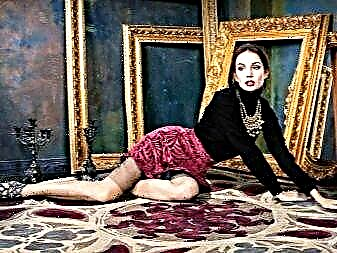

Reviews
Carpets are a special technique of interior design. This is evidenced by the numerous customer reviews left on the Internet. Satisfied with the purchase of such products, buyers note: carpets are the best way to emphasize the idea of design and indicate the particular taste of the owners of the house. Impeccable patterns include long-pile carpets. They are considered premium canvases of all rulers. Buyers note: fur and shaggy carpets are not comparable with other analogues, they have no equal in creating home comfort.
Among lint-free models distinguish mats. Buyers believe that these fabric and woven rugs save the surface of the floor in the dining area, in some cases they can even be washed (if the canvas is small, thin and made of fabric). Those who love bold experiments emphasize ethnic carpets and believe that they are unique, “breathe” their originality and fit perfectly into modern style.
Negative reviews are associated with the quality of the pile, which with improper care makes itself felt by the deterioration of texture.
See even more useful information about interior rugs in the next video.
Color schemes and decor
The choice of carpet color scheme depends on the general concept of the room design. The color of the product should either be harmoniously combined with the general color gamut, or should contrast with it favorably.

In addition to the color scheme of the room, the color and design of the carpet can also be affected by the purpose of the room. For the bedroom, deeper dark colors, such as blue, purple, are suitable. Burgundy models are also able to fit into the classic interior of the bedroom. When choosing a carpet for a child’s bedroom, you can pay attention to options with stripes or with drawings, for example, with stars or mosaics. It is better not to take an excessively dark color; a blue, light green or pink mosaic version will be much more appropriate.
For the kitchen or dining room, it is better to use cheerful warm colors that will help improve appetite, for example, orange or yellow.

But the living room opens up huge scope for choice. Here it is quite possible to experiment, choosing the most unusual and stylish options. If the interior of the room is light and you want to maintain it in the same shades, you should choose a beige woolen rug with a geometric pattern. In addition to decoration, it will also carry an important function of expanding space. If you want to create a brighter interior, you should pay attention to the terracotta hue that has been fashionable for several seasons.
Black and white striped options look stylish enough, they can be interesting prints or geometric shapes, which favorably emphasizes the interior in the loft style or minimalism.
Do you need carpets in a modern interior?
In modern design, carpets are not a necessity, however, not all decide to abandon this addition. In new projects, the carpet has two main functions:
- PracticalAdditional flooring is primarily used to maintain heat. Not every apartment has the opportunity to install a warm floor. In this case, the carpet performs its functions. But even with this system, additional coverage does not become superfluous.
- Aesthetic. When used correctly, this element becomes part of the decor, and helps to create a complete image.
As you can see, the functions of carpets are relevant to this day. Now we will choose the style suitable for such an accessory.

The carpet should not cover more than one third of the floor area
We select an acceptable style
After analyzing new design projects, we concluded that carpets in a modern interior are used in different styles. We divide the available directions into 3 main groups and select a suitable carpet.
| Group | Styles | Textile colors |
| Classics and antiquity | Classicism, Art Nouveau, Baroque, Gothic, Renaissance, Greek, Provence. | Luxurious gold in combination with red, burgundy and raspberry, for some areas pink, blue and pastel shades. |
| Ethnic | Egyptian, African, Japanese, Indian, Moroccan. | The whole range of brown, displaying the colors of the natural material s. |
| Modernity | Hi-tech, pop art, minimalism, fusion. | The discreet palette is predominantly two or three-color. Most often used is white, gray, black, brown. |

The basic criteria for choosing a carpet are size, shape, color and compatibility with the environment.
Consider each style in more detail.
Classicism
This style takes its roots in France from the time of the royal apartments. Here is the place of luxury and chic to the fullest. Classicism is distinguished by expensive natural materials.

The carpet looks crisp in a classic interior
When choosing a carpet for the classics, give preference to three materials:
- Natural fur. This litter will be a real find for lovers of warm and soft floors. This option is perfect for a living room with a hot fireplace or bedroom.
- Wool. High-quality natural wool will decorate any room in the style of classicism. Various patterns can be easily made on this material, which is well suited for the direction in question.
- Silk is considered a truly royal privilege. Despite its softness and lightness, it is quite durable. Carpets are made from silk both for the floor and for the walls. Given that the walls covered with fabric are an indicator of this style, silk wall carpets will come in handy.
Despite all the luxury and chic inherent in classicism, the style is distinguished by rigor and restraint. Clear lines and regular geometric shapes prevail here, the furniture in the room is located according to a certain pattern and each item has its own place.

Carpet, curtains and upholstery are selected in the same style.
The color scheme of the classics is quite simple and restrained. There is no place for colorful shades. Most flowers are muted and paler. Choose a carpet that matches the color and laws of style.
Baroque
This style was born in Italy in the era of the late Renaissance, when at the peak there was pomp, pretentiousness and luxury. The Italian language defines this word as "bizarre." The interior has an appropriate focus.

Luxurious patterned rug in the baroque bedroom
Here we get to know true luxury. And if in the previous version it was restrained and canonical, in this case pomp has no boundaries. It is for this style that an abundance of carpets of various colors and purposes is characteristic. Only cheap modern materials and leather in any of its manifestations are forbidden.
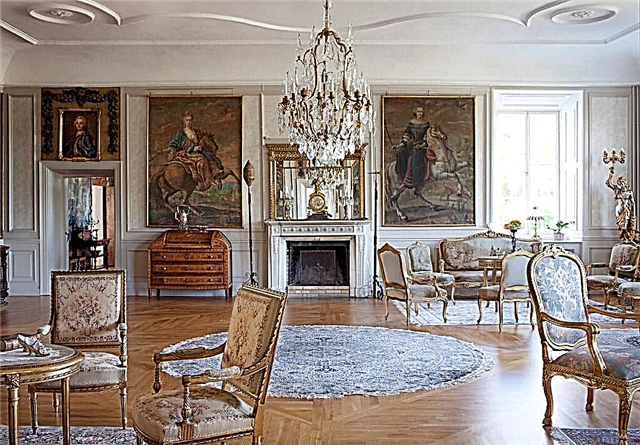
Round rug as a central element of a luxurious living room
For baroque, choose a carpet of good quality, preferably made of natural material, with various patterns, weaving of elite threads, the presence of expensive metals or stones are possible.The coloring should correspond to the general color gamut of the style: gold, yellow, red, burgundy.
Gothic
Initially, Gothic is a designation of a rude medieval culture, from where the modern style takes its roots. Gloomy, mysterious and religious motives prevail here, there are notes of a rural mood.

In Gothic textiles play an important role
So, as a floor covering, fur skins of animals or capes imitating them are appropriate. A long pile of dark color will help to create an atmosphere of gloomy medieval times. Add this look with heavy carved furniture and dim lighting.

A light carpet stands out against the dark floor and softens the gloomy Gothic interior.
The color scheme is mostly dark: carmine, brown, black, raspberry, navy blue. However, carpets can dilute the atmosphere with light tones: white, milky, cream (but always in combination with a dark color: usually blue).
Renaissance
If baroque is a manifestation of the late Renaissance, then the renaissance in the interior is its beginning. In the first case, we have a bizarre, flashy, full of colorful elements style. The Renaissance, although all in gold, is somewhat more restrained. He deliberately has strict lines and regular figures, of which the most common rectangle and square are.
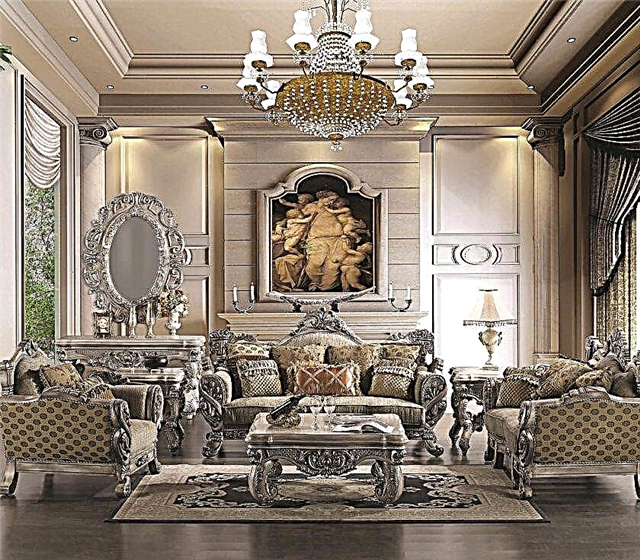
A small rug made of natural material in harmony with the upholstery of upholstered furniture
The color scheme is displayed mainly in blue and yellow. Gold or gilded plating is commonly used here. Precious metals are also found. Speaking of carpets: for wall options, pick brocade, velvet or leather; flooring is predominantly cotton and wool.
Greek
This style is attributed to the antique, as it has existed for quite some time. He successfully manages between majesty and restraint, expressiveness and simplicity. Several trends are mixed here. Textiles mainly display the part responsible for the luxury of style. It is dominated by expensive fabrics for upholstery, curtains and pillows.
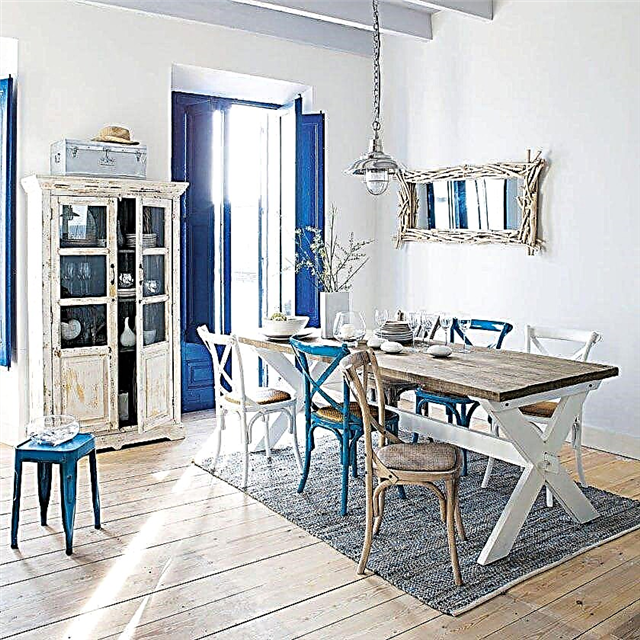
A simple rug serving as a zoning of a dining area

Striped walkway in the interior of a snow-white bedroom
But the flooring is an exception. In this case, simpler and rougher materials are welcome. Handy rugs, hand-knitted walkways and sheep skins are suitable. Cotton motley carpets woven on the loom are also welcome. Such an element will make a cheerful and unusual note in a predominantly two-tone soft interior.
Modern
The heyday of this style came at the end of the XIX century, so it embodies the luxury of previous styles and current trends of the future. There was a fashion for bas-reliefs, curved lines, stained-glass windows, wrought-iron decor elements.

Art Nouveau rug in front of fireplace in living room
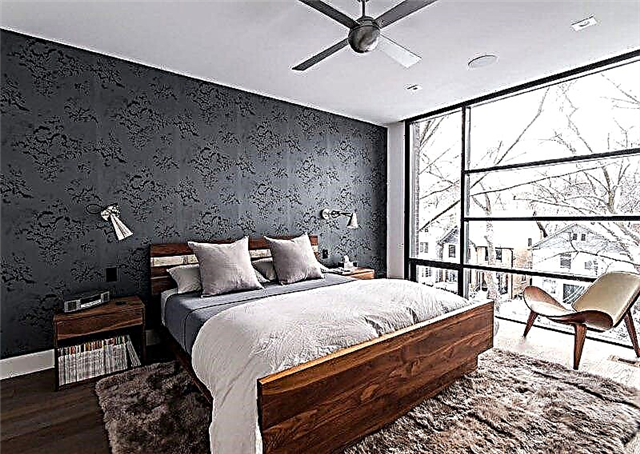
Getting out of bed in the morning, it's nice to lower your legs into a warm carpet.
Walls in Art Nouveau can be covered with silk carpets. Floor in this case take on a simpler outline. Oval litter of two or three-color ones with simple geometric patterns is widespread. Of the materials, wool is good.
Provence
This is primarily simplicity and comfort. Various kinds of textiles in this case is of great importance. Curtains, tablecloths, pillows, napkins are found in abundance here. Additional flooring is required.

One of the options for decorating the floor will be a carpet of rough material

A couple of knitted rugs in the kitchen in the style of Provence
The carpet in the interior of Provence should match the overall color scheme and delicate mood of the style. The basis is pastel colors: beige, milky, peach, ivory. Combine them with blue, pink, green. The leitmotif of the style is floral and rustic themes, which can be fully displayed on any textile.
Middle Eastern
Initially, Iran - a republic located in the Persian Gulf - was called Persia. And, as you know, this territory is considered the birthplace of carpet paths. To this day, Persian rugs are valued quite highly.

Persian carpet - a must-have attribute for any interior in oriental style

Here, carpets are appropriate both on the floor, and on the walls.
This style, adhering to the canons, accepts carpets on the floor, on the walls and even on the ceiling. Entering the living room in the Middle East, you will see an abundance of various carpets. Variegated woolen items with many small patterns prevail here.
Egyptian
Another ethnic style in which an important place is given to textiles. Rugs here are simpler and thinner, made from natural materials. They are characterized by strict forms and patterns characteristic of the Egyptian theme.
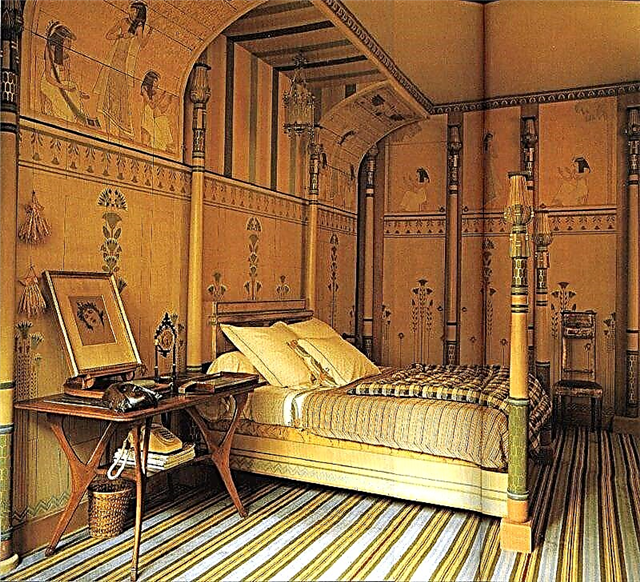
Pictures on the walls and striped carpet on the floor are standard elements of the Egyptian direction

Thin white carpet in harmony with light walls
Thin tapestries depicting ancient Egyptian gods or animals are used on the walls. The color scheme is represented by bright and rich natural shades: yellow, orange, red, raspberry, brown, blue, green, an abundance of gold is welcomed.
African
African fantasy is a mixture of modernity and primitiveness of the “black continent”. The basis here is simple and natural shades that imitate natural materials (clay, sand, scorched soil, dry grass). Walls, ceilings and floor lines are monotonously painted in such colors. The furniture is also mostly monochrome, but in darker colors (brown, black).

Products imitating wild animal skins are often placed on the floor.
The elements that relate this style to the ethnic past are decorations and textiles. Carpets, pillows and curtains have patterns and prints characteristic of different African tribes. More bold and vibrant colors are added to these elements, but the most common combination remains yellow with dark brown.
Japanese
This is the epitome of clarity and rigor. Cleanliness and order, clear geometric outlines and straight lines dominate here. Japanese interior can be considered the embodiment of minimalism. In the room there is only the most necessary. This also applies to furniture and jewelry.
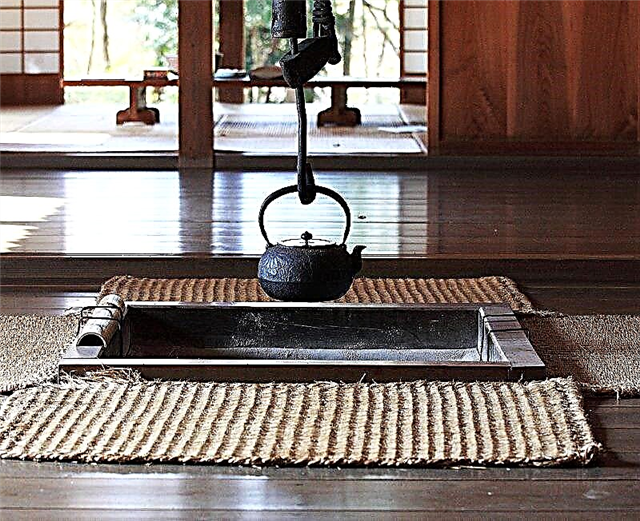
Japanese style loves everything natural
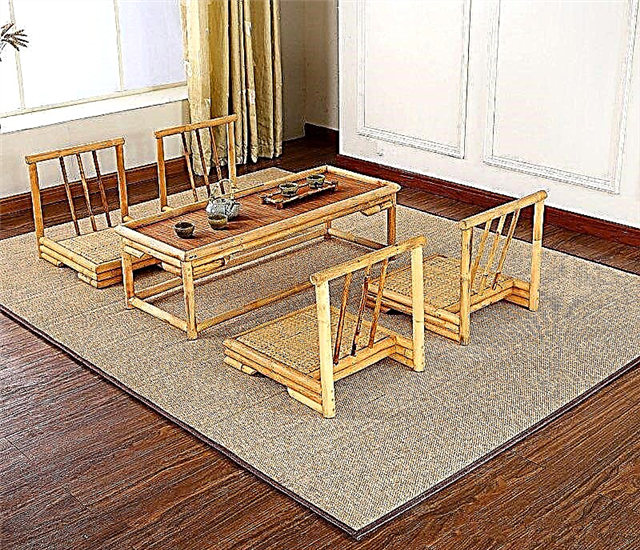
The bamboo carpet is not afraid of water and does not require delicate care
It is worth noting the environmental focus of the style. This determines the choice of materials for various elements. The furniture is mainly made of natural wood. Carpets made of rice, cane and bamboo. The fibers from these plants give durable, rough to the touch and simple products that support a minimalistic style.
Minimalism
The most common modern direction. Minimalism is the rejection of all that is superfluous, the liberation of maximum space, simple furniture, and the absence of various decorations.

In minimalism, the carpet often compensates for the absence of curtains on the windows.
The flooring here is mainly used tiles, laminate and linoleum without additional elements. However, in some projects, the carpet also successfully took root. In this case, he adopts the basic laws of style, acquiring a clear geometric shape (the most used shape is a rectangle), neutral colors. In minimalism, the carpet is not a decor, but performs a certain practical function and creates the completeness of the image.
For this style, the carpet should be large, mainly made of hard synthetic fibers. Its color palette is limited to gray, white, black or brown and their shades. Also widely used non-removable coating - carpet. This is a convenient option for a bedroom or living room.

Synthetic carpet in a bedroom decorated in plain white tones
It is worth noting that there are varieties of minimalism: eco, industrial, Scandinavian, Japanese. Given the characteristics of each subspecies, you can add the corresponding elements and color notes.
As you can see, the carpet as such has not yet outlived itself, and is well suited for creating images of various styles.
Preparation method
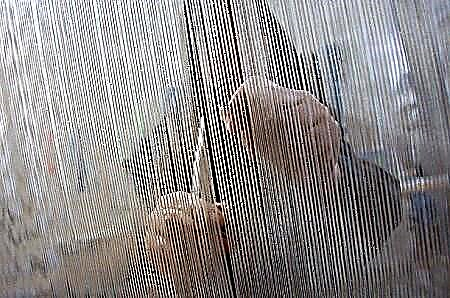
All types of carpets are made in two ways: manually and using automated machines.
- Manual is the most valuable and costly way to make luxury carpet models. As a rule, only natural materials of the highest quality are used. Amazing, but the price of Persian and Iranian products can reach $ 1000 per meter, in China you can buy for only $ 800.
- Machine - the most common method of production. Modern technology and engineering solutions can reduce production time and money to a minimum. Due to the use of synthetic threads, they are more affordable and more durable.
Pile length

Most buyers opt for carpet with pile, and there are some nuances. Conventionally, the pile can be divided into long, medium and short. The length can be from 2.5 to 10 cm. The shorter the pile, the longer the carpet will last, which is why in rooms with high throughput the most often are carpets without pile. But a short pile does not give the coziness and comfort that should be present.

Long-pile carpets are mainly laid in the bedrooms. If the pile is short - place the carpet in the hallway or living room. The longer the pile of the carpet, the more it deforms under the heavy furniture, it will take some time to restore naturally.
Carpet base

Depending on the network, which is the basis, carpets are divided into four main groups: woven, wicker, tufted, felted.
- Woven carpets have no pile, the pattern is embroidered on them.
- Wicker carpets, in turn, have a pile. Nodules bend around the warp thread, forming a pattern.
- Tufted (needle-punched) carpets are now very popular. They are created by machine, but they are often given out for manual work.
- The latter are only superficially similar to carpets, so they are called that. The manufacturing technology is completely different, there is no basis, in fact they are not carpets.
Wool Carpet

Wool rightfully occupies a leading position as a natural material for carpets, because it is very warm and soft, besides it is resistant to wear and pollution. Carpets made of wool are dense and thick, therefore they absorb sound well and repel moisture, being a long-lasting attribute (they last from 20 to 50 years).
Of the minuses, it can be noted that woolen carpets are not suitable for allergy sufferers and tend to accumulate a static charge and are not ready to lie under the scorching sun.
This type of carpet can be made of lamb, goat and camel hair.
- Lamb wool is the most popular, as it is economically profitable (there are a lot of sheep).
- Goat hair is better than lamb in terms of characteristics, but such a carpet will be difficult to find. Goat wool carpets are less common for two reasons: goat breeding is more difficult to grow sheep and they are grown mainly for dairy products.
- Camel hair is the best, but very expensive material, it is just perfect for carpet. This coat is stronger, better retains heat. In addition, it does not cause allergies and is not electrified. There are much fewer camels, it must be understood, it will not be easy to get a carpet from camel wool.
Acrylic carpet

Acrylic is an artificial substitute for wool, and it has many of its features. Acrylic carpets look and feel strongly reminiscent of woolen carpets, and their main advantage is that they do not cause allergies and hardly accumulate static electricity, unlike other synthetics. They repel moisture and mold well, such a carpet can be laid in the bathroom. The only negative is that it is less wear-resistant.
Cotton Carpet

Very often, cotton carpets are placed in rooms with high humidity, as they absorb moisture well. But it must be borne in mind that cotton carpets are inferior in terms of resistance to materials higher, and in the presence of moisture they wear out even faster. According to the tactile sensations, they are softer than wool, it is easier to clean them. Most likely, you will not be able to find a carpet made of pure cotton, wool will be mixed there, which will only improve all the characteristics of the carpet.
Carpet and Polypropylene

Carpets made of polypropylene and olefin are also similar to wool, and no less popular. The reason for this is: a wide range, really low cost, ease of maintenance and unpretentiousness, low weight, color saturation with resistance to cleaning.
Polyester Carpet

Polyester carpets are similar to woolen ones, they look beautiful and rich, especially with a high pile. They are soft, warm, and even easy to clean. Like all synthetics, to the touch this type of carpet is little different from natural. They have less elasticity than acrylic carpets, but they are stronger and more durable.
Bamboo carpet

Both in appearance and to the touch, a bamboo carpet will be coarse in comparison with other raw materials. Such carpets are chosen for their original appearance of an exotic orientation. Similar plant materials are also used, such as jute, sisal and seaweed. Carpets are durable, but not suitable for wet rooms.
Rayon or silk rug

By tactile sensations, viscose carpets strongly resemble silk. And they look luxurious, mainly due to the rich pattern, giving a glossy shine and shimmering in the sun (all this is inherent in silk). Silk carpets are embroidered manually from bright, thin, but durable fabrics. Viscose is an analogue, respectively, much cheaper than natural silk carpets. Silk carpets are not laid on the floor, they are treated like a work of art, their place on furniture or walls.
Now you know what types of carpets exist, what they are made of and what they are.



